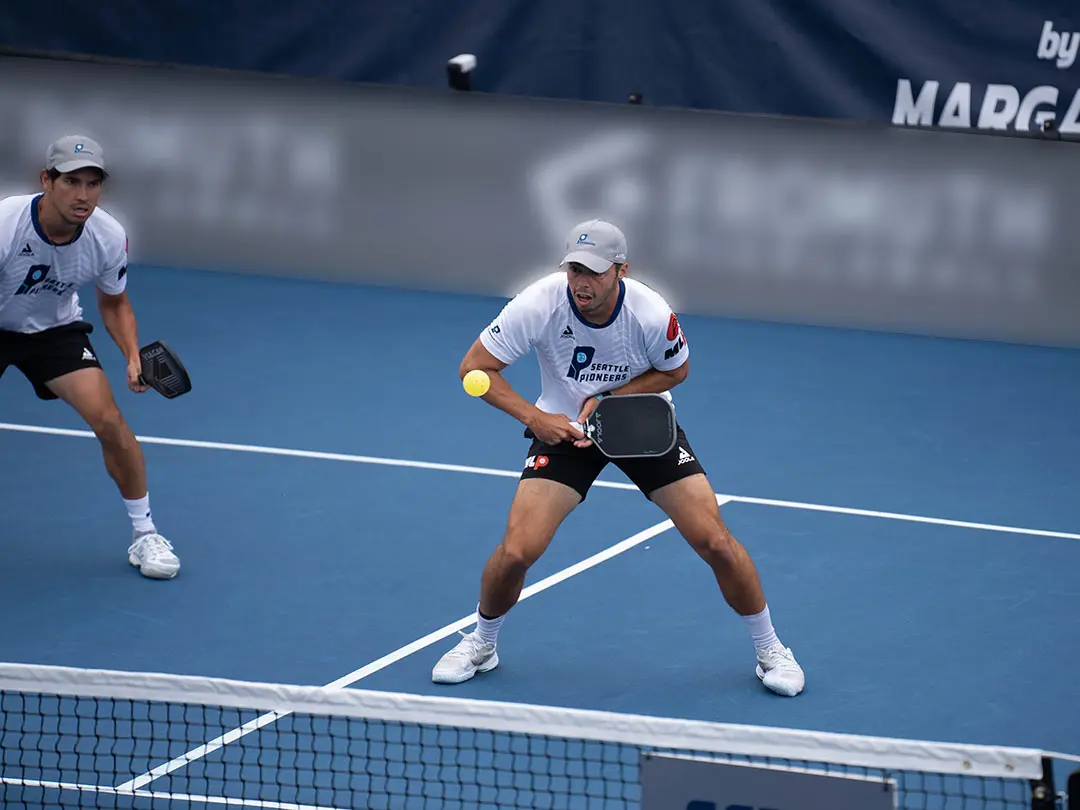Your cart is currently empty!

Pickleball is often described as a fast-paced, dynamic sport, but behind every point lies a crucial mental element: thinking. While quick hands and athleticism matter, it is the ability to think clearly, make deliberate decisions, and choose the right shot at the right time that separates good players from great ones. Success comes from recognizing each ball as a decision point—an opportunity to stay safe or to seize control.
When the opponent sends the ball your way in a match, your mental game can boil down to two responses:
- Defensive reset — placing the ball softly to neutralize your opponent’s momentum;
- Offensive strike — attacking to seize control and force errors.
Understanding when and how to alternate between these mindsets elevates your performance from reactive to strategic.
Defensive Resets: Neutralizing and Regaining Control
A defensive reset is not simply surviving the rally—it’s about regaining control of it. A well-placed reset buys you time, reduces your opponent’s options, and shifts the tone of the exchange.
As highlighted by coaching resources such as Paddletek’s article on How Do You Defend in Pickleball?, resets allow players to defuse power and keep rallies alive without handing opponents easy opportunities to finish. The aim is not passive defense but active neutralization. Soft dinks into the kitchen, delicate drops from mid-court, or lobs that push opponents back all represent resets that shift momentum.
SpeakPickleball’s guide on player archetypes describes the Defensive Dynamo—a player who patiently resets rallies and frustrates aggressive opponents until they make mistakes. This approach highlights the mental toughness needed to resist panic and opt for control over chaos.
Offensive Attacks: Seizing the Moment
On the other end of the spectrum lies the offensive response. When you see your opponent stretched out of position, hitting high balls, or showing poor balance, it’s time to flip the switch from neutralizer to aggressor.
Articles such as Mastering the Balance: Defense vs. Offense in Pickleball emphasize that the art of offense lies in timing. An aggressive strike—a deep drive, a sharp volley, or a well-placed overhead—forces your opponent into reactive defense and can quickly close out points.
This is where the Aggressive Attacker archetype comes into play. These players thrive on speed and power, making their mark by striking early and decisively. But as every experienced player knows, aggression without thought often leads to unforced errors. Effective offense requires both courage and control.
Balancing Reset and Attack: The True Mindset
The real advantage in pickleball comes from knowing when to reset and when to attack. Very few points can be won by sticking with just one strategy. The key is adaptability—reading the ball, the opponent, and the moment.
The All-Court Paladin archetype described in SpeakPickleball’s player archetypes guide reflects this adaptability: a versatile player capable of both defensive patience and offensive bursts, switching fluidly depending on the rally. That balance is what frustrates opponents most and leads to consistent success.
As Pickleball Tips points out in their article on mentality, mindset is not just physical mechanics but also emotional control. Players who think clearly under pressure avoid reckless shots, stay calm during resets, and only attack when the opportunity is truly there.
Putting the Mindset Into Action
Imagine you are in the middle of a rally and your opponent fires a fast drive toward you:
- Reset response: You soften your hands, absorb the pace, and drop the ball gently into the kitchen. Suddenly, the opponent has lost their attack and you’re back in a neutral rally.
- Attack response: On the next ball, they pop up a high dink. This time, you pounce, driving it sharply into the corner and forcing an error.
This combination of patience and opportunism defines elite play. It’s not about guessing what to do; it’s about thinking ahead, reading the situation, and executing with confidence.
Developing the Dual Mindset
To internalize this approach, players can train in three ways:
- Drills alternating between soft resets and aggressive finishing shots.
- Match simulations designed to recognize when to neutralize versus when to attack.
- Mental training to stay calm, focused, and adaptable during high-pressure moments.
Conclusion
Pickleball is a sport of choices. Every incoming ball offers two main pathways: reset or attack. By building the mental discipline to recognize which option suits the moment, you transform from a player who reacts to one who dictates the match.
Think first, then act. That split-second decision—whether to slow the rally or seize it—often makes the difference between winning and losing.
Picture Source: JOOLA Pickleball






